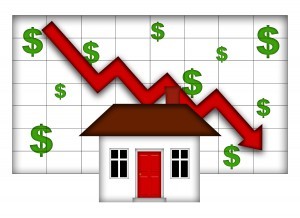 After the crash in the housing market, real estate was hit by the worst recession in our nation’s history. Frankly, brokers took a beating and operated at a loss for a number of years. Since the low point, things have been steadily been improving.
After the crash in the housing market, real estate was hit by the worst recession in our nation’s history. Frankly, brokers took a beating and operated at a loss for a number of years. Since the low point, things have been steadily been improving.
There was a lot of speculation that the foreclosure volume in the hardest hit markets were clogging up the supply side. As we turned the corner, these distressed properties were slowly released into the marketplace and they are mostly absorbed. There was a two to three year heyday for brokers and agents who specialized in REO properties. Looking at the production of many of the REO specialists, that business has largely fallen back to normalized levels.
CoreLogic reports that the volume of “underwater” mortgages has been on a steep decline and is also returning to normal levels. That is pretty good news. It allows homeowners to trade homes without taking a loss. However, this is not opening up inventory levels for most areas of the nation. For many, inventory is still very low and that is having an impact on pricing. Home values have seen double digit increases, as supply has been so limited. That is expected to flatten out this year, largely because of affordability. Wages have not increased in line with housing values.
The biggest slump we see in the market is driven by expansion. The demand for homes is outpacing supply by double digits in many areas like the San Francisco Bay Area. People cannot find housing and there is not enough new inventory being built. Pacific Union held a housing summit in November of 2015 that looked at the three year forecast for housing in the Bay Area – this was my chief takeaway. See more here: http://www.pacificunion.com/jazz.
The slump has been caused by a shortage of builders. Many of the top analysts that cover the new home market estimate that even with new construction starts hedging up 10 percent, they have only recovered 64 percent since the bottom. That leaves a lag or shortage of 34 percent behind the normalized demand for new homes.
An interesting nuance to the builder story is that multifamily is up 11 percent, and is running about 250 percent ahead of the trough and actually 1 percent above the norm. This is a huge bounce that represents a shift from home ownership to renting.
Some Things to Think About
As a broker, you should probably be putting effort into developing your property management business. It is not hugely profitable, but it does provide reliable and steady income when housing dips.
As an MLS, you should be putting effort into making sure that your services support property managers. Many MLSs in the country do not even allow rentals, nor do they have rules and regulations to support them. MLSs like the Houston Association of REALTORS® have done an excellent job of developing these programs in their market. As proof of their dedication, HAR.com means “Homes and Rentals.”
WAV Group supports brokerages and MLSs with developing strategy and executing these types of programs. Let us know if you need some help.




